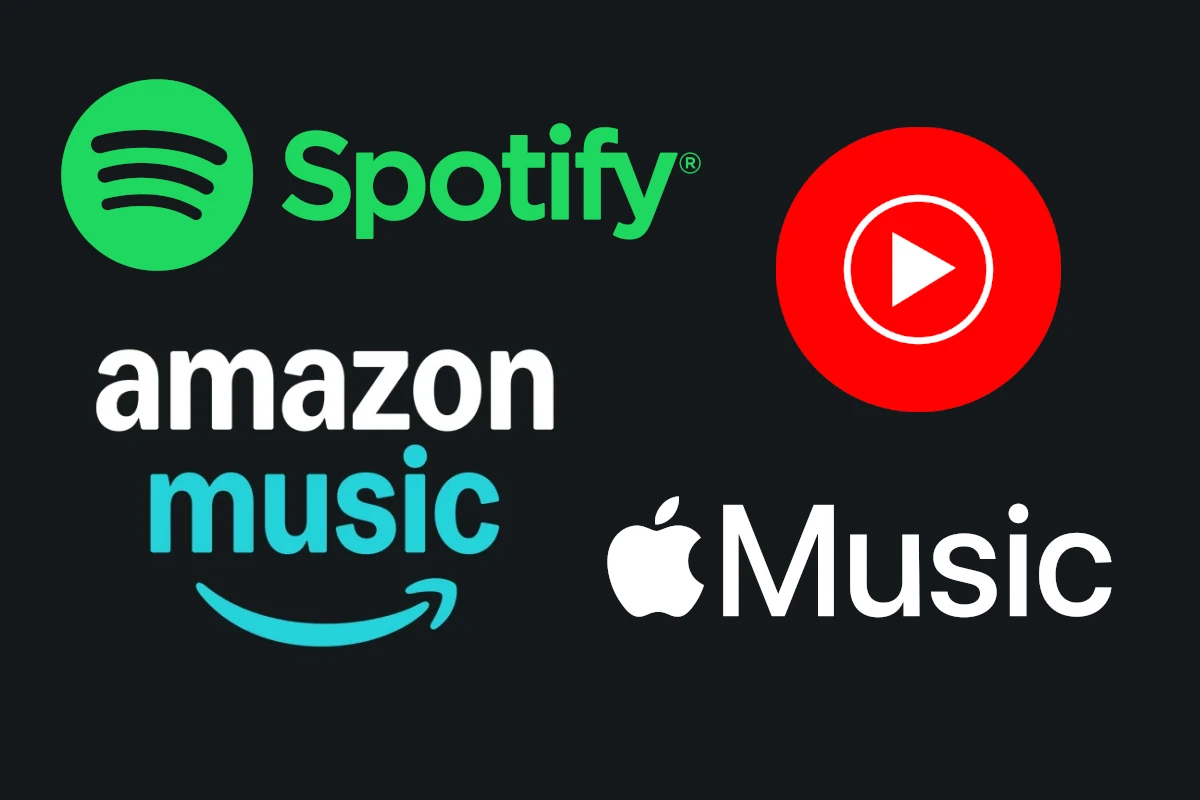Music streaming services have become essential for music lovers and as we head into 2025, Spotify remains the top choice for most users due to its extensive library, personalized playlists, and user-friendly interface. However, other services like Apple Music, Tidal, and Amazon Music offer unique features that cater to different audiences.
For audiophiles, Tidal stands out with its high-fidelity audio options. Apple Music seamlessly integrates with Apple devices and offers spatial audio capabilities. Meanwhile, Amazon Music provides good value for Prime members by including a basic tier of service.
Ultimately, the best music streaming service depends on individual needs. Factors to consider include audio quality, device compatibility, exclusive content, and pricing. Users are encouraged to take advantage of free trials to find the service that best suits their preferences.
Music Streaming Services Ranked (2025)
| Rank | Service | Key Features | Pros | Cons |
|---|---|---|---|---|
| 1 | Spotify | Massive library, personalized playlists, social features, free plan | Huge selection, curated playlists, discover new music easily, connect with friends | Audio quality not the best, limited personal music uploads |
| 2 | Apple Music | High-quality audio, integrates with Apple devices, upload personal library | Excellent sound, seamless Apple experience, combines your music with streaming | More expensive, limited free tier |
| 3 | YouTube Music | Music videos and live performances, extensive library, free plan | Diverse content, good sound, ad-supported option | Cluttered interface, limited personal uploads |
| 4 | Amazon Music Unlimited | Large catalog, integrates with Amazon devices, affordable plans | Good value, especially for Prime members, works well with Echo devices | Interface not as user-friendly, fewer social features |
| 5 | Tidal | High-fidelity audio, exclusive content | Lossless audio quality, unique artist content | Expensive, smaller library than others |
Finding the Perfect Music Streaming Service in 2025
Choosing the right music streaming service can be tricky. Each service has its own strengths and weaknesses. Let’s compare some of the top contenders for 2025 to help you find the perfect fit.
1. Spotify
Spotify is the most popular music streaming service globally, known for its massive music library, personalized playlists, and social features. It offers a free, ad-supported plan and a premium ad-free plan with offline listening.
Pros:
- Massive music library
- Personalized playlists and recommendations
- Free, ad-supported plan available
- Social features
Cons:
- Audio quality not as high as some competitors
- Limited features for uploading personal music
2. Apple Music
Apple Music stands out for its vast music library and integration with Apple devices. It offers high-quality audio streaming and a user-friendly interface. Apple Music also allows you to upload your own music library, making it a great choice for those with extensive personal collections.
Pros:
- Large music library
- High-quality audio
- Seamless integration with Apple devices
- Upload and integrate your own music library
Cons:
- More expensive than some competitors
- Limited free tier
3. YouTube Music
YouTube Music combines a vast music library with access to music videos and live performances. It offers a free, ad-supported plan and a premium ad-free plan with background playback and offline downloads.
Pros:
- Extensive music library, including music videos and live performances
- Free, ad-supported plan available
- Good sound quality
Cons:
- User interface can be cluttered
- Limited features for uploading personal music
4. Amazon Music Unlimited
Amazon Music Unlimited boasts a massive music catalog and integration with Amazon devices. It offers a variety of pricing plans, including a discounted plan for Amazon Prime members.
Pros:
- Large music library
- Integration with Amazon devices
- Affordable plans, especially for Amazon Prime members
Cons:
- User interface not as intuitive as some competitors
- Limited social features
5. Tidal
Tidal focuses on high-fidelity audio streaming and exclusive content. It offers a variety of plans, including a HiFi plan with lossless audio quality and a Master plan with even higher audio quality.
Pros:
- High-fidelity audio streaming
- Exclusive content, including live performances and artist interviews
Cons:
- More expensive than most competitors
- Smaller music library than some competitors
Choosing the Right Service for You
The best music streaming service depends on your needs and priorities. Consider these factors:
- Music library: Does the service offer the music you want to listen to?
- Audio quality: How important is high-fidelity audio to you?
- Features: What features are important to you, such as offline listening, personalized playlists, or social features?
- Price: What is your budget for a music streaming service?
- Device compatibility: Is the service compatible with your devices?
By considering these factors, you can choose the music streaming service that best fits your needs and preferences.
Music Streaming and Data Usage
Streaming music can consume a significant amount of data, especially if you prefer high-quality audio or stream frequently. Here’s a breakdown of approximate data usage for different streaming quality levels:
| Quality | Data Usage (per hour) |
|---|---|
| Low | 30 MB |
| Normal | 60 MB |
| High | 150 MB |
If you have a limited data plan, consider these tips to manage your data usage:
- Download music for offline listening: Most music streaming services allow you to download songs, albums, or playlists for offline playback. This can significantly reduce your data usage.
- Adjust the streaming quality: Lower the streaming quality in your app settings to use less data.
- Monitor your data usage: Keep track of your data usage through your mobile provider’s app or website.
- Connect to Wi-Fi: Whenever possible, connect to Wi-Fi to avoid using your mobile data.
By being mindful of your data usage and using these strategies, you can enjoy your favorite music without worrying about exceeding your data limits.
Key Takeaways
- Spotify leads the market with its extensive library and personalized features
- High-fidelity audio seekers may prefer Tidal, while Apple users benefit from Apple Music
- Free trials help users find the best service for their specific needs and preferences
Evaluating Music Streaming Services
Choosing the best music streaming service involves comparing key factors. These include the service’s overall features, audio quality, and subscription options.
Service Overview and Music Library
Top music streaming platforms offer vast libraries with millions of songs. Spotify boasts over 100 million tracks, while Apple Music and Amazon Music Unlimited match this number. Tidal and Qobuz focus on high-quality audio and often include exclusive content.
User interfaces vary between services. Spotify’s app is known for its intuitive design and social features. Apple Music integrates seamlessly with iOS devices. Amazon Music Unlimited works well with Alexa-enabled devices.
Playlist curation and music discovery tools differ. Spotify excels in personalized playlists like Discover Weekly. Apple Music offers human-curated playlists. Tidal provides expertly curated playlists for audiophiles.
Audio Quality and Formats
Audio quality is a key differentiator among streaming services. Here’s a breakdown:
- Spotify: Up to 320 kbps (Ogg Vorbis)
- Apple Music: Up to 24-bit/192 kHz (ALAC)
- Amazon Music Unlimited: Up to 24-bit/192 kHz (FLAC)
- Tidal: Up to 24-bit/192 kHz (FLAC)
- Qobuz: Up to 24-bit/192 kHz (FLAC)
Tidal and Qobuz lead in hi-res audio offerings. Apple Music provides lossless and Spatial Audio at no extra cost. Amazon Music Unlimited includes HD and Ultra HD audio in its standard subscription.
Subscription Plans and Benefits
Pricing and plan options vary across services:
| Service | Individual Plan | Family Plan | Student Plan |
|---|---|---|---|
| Spotify | $9.99/month | $15.99/month (6 users) | $5.99/month |
| Apple Music | $10.99/month | $16.99/month (6 users) | $5.99/month |
| Amazon Music Unlimited | $9.99/month | $15.99/month (6 users) | $5.99/month |
| Tidal | $9.99/month (HiFi) | $14.99/month (HiFi, 6 users) | $4.99/month (HiFi) |
| Qobuz | $12.99/month | N/A | N/A |
Most services offer free trials. Spotify provides a free ad-supported tier. Family plans often include parental controls and individual accounts for each member.
Additional benefits may include offline playback, lyrics display, and integration with smart home devices. Some services bundle video content or podcasts with their music subscriptions.
Distinctive Features and User Experience
Music streaming services offer unique features and interfaces to enhance user enjoyment. These platforms focus on personalized music discovery, intuitive design, and exclusive content to attract and retain subscribers.
Music Discovery and Personalization
Music streaming services employ advanced algorithms to suggest new tracks and artists. Spotify’s Discover Weekly playlist refreshes every Monday with personalized song recommendations. Apple Music uses human curation alongside AI to create tailored playlists.
Many platforms analyze listening habits to generate daily mixes. These combine familiar tracks with new discoveries. Users can also explore curated playlists for different moods, activities, or genres.
Some services offer radio-style stations based on specific songs or artists. This feature helps users find similar music they might enjoy. Social sharing options allow friends to exchange playlists and favorite tracks.
User Interface and Accessibility
A clean, intuitive interface is crucial for music streaming apps. Tidal offers a sleek design with high-resolution album art. Spotify’s dark theme reduces eye strain during nighttime use.
Most services provide mobile and desktop apps. These sync listening history and playlists across devices. Voice control integration, like Siri for Apple Music, allows hands-free operation.
Accessibility features are increasingly important. Many apps offer larger text options and screen reader compatibility. Offline playback lets users download music for listening without an internet connection.
Platform Exclusive Content and Extras
Exclusive content sets streaming services apart. Apple Music offers artist interviews and live performances. Tidal provides exclusive album releases and concert livestreams.
Some platforms create original podcasts and video content. Spotify produces exclusive podcast series on various topics. Amazon Music includes lyrics display for sing-along experiences.
Extra features enhance user engagement. Collaborative playlists let friends build shared collections. Integration with fitness apps tracks workout intensity based on music tempo. Virtual concerts and artist Q&A sessions provide unique experiences for subscribers.
Frequently Asked Questions
Music streaming services continue to evolve rapidly. Users seek the best value, features, and audio quality across various platforms.
Which music streaming service offers the best value for its price as of 2025?
Spotify remains a top contender for value in 2025. The platform offers a vast library, personalized playlists, and podcasts at competitive prices.
Apple Music provides excellent value for Apple device users. Its integration with the Apple ecosystem and high-quality audio justify the cost.
For budget-conscious listeners, YouTube Music offers a free tier with ads. The paid version unlocks additional features at a reasonable price point.
How have music streaming services evolved in terms of features for users in 2025?
AI-powered recommendations have become more accurate. Services now offer personalized daily mixes based on listening habits and moods.
Social features have expanded. Users can now share live listening sessions with friends and collaborate on playlists in real-time.
Lossless audio has become standard across most premium tiers. This offers audiophiles studio-quality sound without additional fees.
What are the top music streaming platforms available in 2025 based on user satisfaction?
Spotify consistently ranks high in user satisfaction. Its intuitive interface and vast music library contribute to its popularity.
Apple Music excels in customer satisfaction among iOS users. The seamless integration with Apple devices enhances the user experience.
Tidal has gained ground with its focus on high-fidelity audio. Music enthusiasts appreciate the platform’s commitment to sound quality.
Which music streaming service provides the highest quality audio experience in 2025?
Tidal leads in audio quality with its Hi-Fi Plus tier. It offers Master Quality Authenticated (MQA) files and Dolby Atmos support.
Amazon Music HD provides Ultra HD audio. This service caters to audiophiles with its extensive high-resolution audio catalog.
Apple Music and Spotify have both improved their audio quality. They now offer lossless and spatial audio options at no extra cost.
For platform-specific users, which music streaming service is recommended for Android or iPhone in 2025?
For Android users, YouTube Music is a strong choice. It integrates well with Google services and offers a familiar interface.
iPhone users benefit most from Apple Music. The deep integration with iOS devices provides a seamless experience.
Spotify works equally well on both platforms. Its cross-platform consistency makes it a versatile option for all users.
What free music streaming services are most competitive in 2025?
Spotify’s free tier remains competitive. It offers ad-supported listening with some limitations on mobile devices.
YouTube Music provides a robust free option. Users can access a vast library of songs and music videos with ads.
Pandora’s free radio service continues to attract listeners. Its algorithm-driven stations offer a hands-off listening experience.







